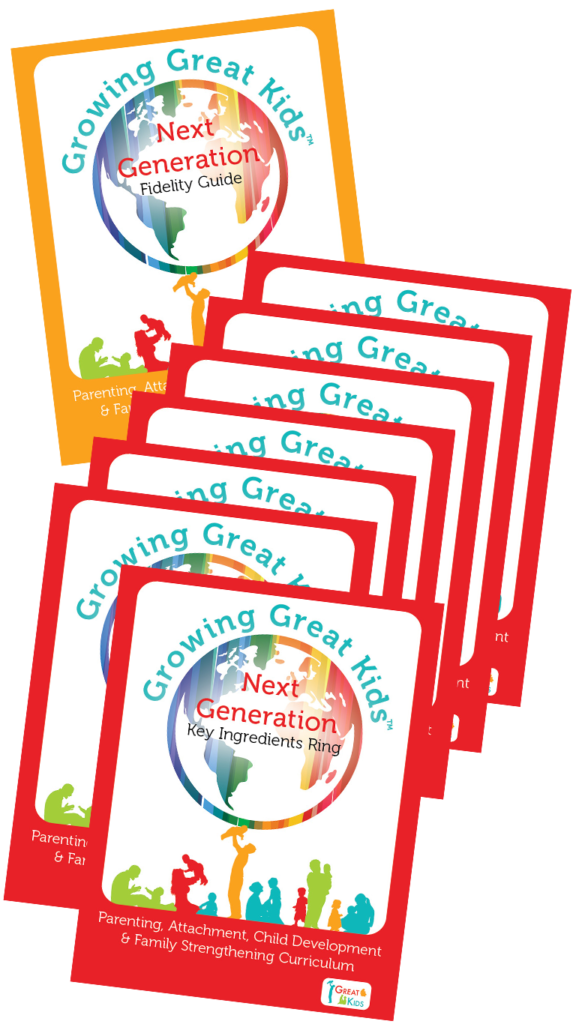 | | | | About the Author Melissa Weekes is a Product Development Specialist. Prior to joining Great Kids® in 2018, she worked as a home visitor with Public Health Services where she used the Growing Great Kids® Curriculum. Melissa lives in Nova Scotia, Canada, with her husband and enjoys any opportunity to be creative! |
Recently, I was drifting off to sleep when the sound of loons calling on the lake brought me back to consciousness. The ethereal sound was a feast for my ears, and I lay there in awe, soaking up every lingering echo. It had been years since I had been treated to such a symphony.
For the past five summers, there had been a solitary loon on the lake, mournfully wailing at night with no response. Occasionally, if the loon sounded during the day, our rooster would reply, as if to offer some empathy, but it didn’t cut it for the loon or us. So, you can imagine my delight when I heard two loons calling and communicating with one another in a soul-stirring back-and-forth duet. If you’ve never heard it, look it up online, as there’s no sound quite like it.
Defining Serve and Return
This orchestrated turn-taking is an excellent example of serve-and-return interactions. The Center on the Developing Child at Harvard University uses the term serve and return to describe responsive back-and-forth interactions between parents and young children, similar to taking turns in a game of tennis.4
Think, for example, about how often you’ve seen a baby smile and automatically responded by smiling back. The baby initiates or serves, and you return the interaction. You might say something like, “You’re happy today.” Then, the baby takes another turn by looking at you and cooing or gurgling, and you find yourself responding by copying their sounds. And so the conversation goes on, back and forth, with you and the baby taking turns.
How Serve-and-Return Interactions Impact Child Development
Babies are born wired to seek this kind of back-and-forth interaction, and these warm exchanges shape their brains and build language and social skills crucial for healthy development.4 For infants, these turn-taking interactions are not only the beginning of communication but also the early stages of play.8 Serve-and-return interactions are such an essential part of child development that the Growing Great Kids® Curriculum has a Key Ingredient, Two-Way Talk, dedicated to enhancing parenting skills in this area.
Why Adult Communication Still Needs Serve-and-Return
But the importance of serve-and-return interactions doesn’t diminish as we grow. This concept is foundational for effective communication and for building trusting relationships throughout our lives.10
For example, we all know how it feels to serve an interaction and not get a response. You say something, but only hear crickets as the conversational ball thuds to the ground, bounces across the other side of the court, and rolls out of play. Sometimes our timing is off, and the other person isn’t ready or is distracted by something else. Whatever the reason, an unreturned serve can leave us hanging, feeling unseen, and likely hurt or disappointed.
But when we serve an interaction through our words, facial expressions, or body language, and someone notices and responds, our spirits are lifted, and we feel connected. Just like infants, we are wired for connection, and these kinds of positive interactions support healthy brain circuitry and mental well-being.6,7
Strengthening Relationships Through Communication
In the work of supporting families, warm, serve-and-return interactions provide positive experiences that boost parental resilience.6,8,9 As parents feel seen and heard through authentic back-and-forth conversations, they can use these experiences as reference points to engage in serve-and-return interactions with their children through the parallel process.
We all want to impact families with this kind of positive ripple effect. So, let’s look at FIVE ways to foster a climate for meaningful serve-and-return interactions that strengthen trusting relationships. How many of the following are you already doing?
5 Ways to Strengthen Serve-and-Return with Families:
- Noticing when a person serves an interaction by paying attention to their body language, facial expressions, and words.3
- Listening well and holding space for someone to share, rather than focusing on what you want to say.2,5
- Reflecting back what you think they are trying to tell you to see if you understand correctly.5
- Asking open-ended questions to learn more.2,5
- Affirming them and making them feelvalued.1,2,5
Practicing these strategies helps us engage in conversations that cultivate a dynamic partnership where each person contributes, listens, and builds upon one another’s ideas, fostering deeper connections and greater understanding.
So, no matter who you talk with today, consider how you can create a climate for meaningful serve-and-return interactions that make the other person feel seen, heard, and valued. Doing so will support your own sense of connection and well-being, too.
If you are interested in learning more communication strategies, follow this link to explore Great Kids® ENGAGE: Effective Communication Training!
References
1. Adler, R. B., Rodman, G., & du Pré, A. (2020). Understanding human communication (14th ed.). Oxford University Press.
2. Brown, B. (2018). Dare to lead: Brave work, tough conversations, whole hearts. Random House.
3. Center on the Developing Child at Harvard University. (2019). 5 steps for brain-building serve and return. https://harvardcenter.wpenginepowered.com/wp-content/uploads/2017/06/HCDC_ServeReturn_for_Parents_Caregivers_2019.pdf
4. Center on the Developing Child at Harvard University. (2025, March 13). Serve and return. https://developingchild.harvard.edu/key-concept/serve-and-return/
5. Miller, W. R. & Rollnick, S. (2013). Motivational Interviewing: Helping people change (3rd ed.). The Guilford Press.
6. Perry, B. D., & Winfrey, O. (2021). What happened to you?: Conversations on trauma, resilience, and healing. Flatiron Books.
7. Pfitzer, S. (Host). (2020, January 10). Brain architecture: Laying the foundation [Audio podcast episode]. In The brain architects podcast. The Center on the Developing Child at Harvard University. https://developingchild.harvard.edu/resources/podcasts/the-brain-architects-podcast-brain-architecture-laying-the-foundation/
8. Pfitzer, S. (Host). (2022, February 22). Building resilience through play [Audio podcast episode]. In The brain architects podcast. The Center on the Developing Child at Harvard University. https://developingchild.harvard.edu/resources/podcasts/podcast-resilience-play/
9. Sege, R. D., & Harper Browne, C. (2017). Responding to ACEs with HOPE: Health outcomes from positive experiences. Academic Pediatrics, 17(7S), S79–S85. https://doi.org/10.1016/j.acap.2017.03.007
10. Wheatley, T., Boncz, A., Toni, I., & Stolk, A. (2019, July 17). Beyond the isolated brain: The promise and challenge of interacting minds. Neuron, 103(2), 186-188. https://www.cell.com/neuron/fulltext/S0896-6273(19)30434-9?_return


